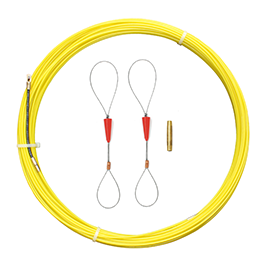
-
 Afrikaans
Afrikaans -
 Albanian
Albanian -
 Amharic
Amharic -
 Arabic
Arabic -
 Armenian
Armenian -
 Azerbaijani
Azerbaijani -
 Basque
Basque -
 Belarusian
Belarusian -
 Bengali
Bengali -
 Bosnian
Bosnian -
 Bulgarian
Bulgarian -
 Catalan
Catalan -
 Cebuano
Cebuano -
 Corsican
Corsican -
 Croatian
Croatian -
 Czech
Czech -
 Danish
Danish -
 Dutch
Dutch -
 English
English -
 Esperanto
Esperanto -
 Estonian
Estonian -
 Finnish
Finnish -
 French
French -
 Frisian
Frisian -
 Galician
Galician -
 Georgian
Georgian -
 German
German -
 Greek
Greek -
 Gujarati
Gujarati -
 Haitian Creole
Haitian Creole -
 hausa
hausa -
 hawaiian
hawaiian -
 Hebrew
Hebrew -
 Hindi
Hindi -
 Miao
Miao -
 Hungarian
Hungarian -
 Icelandic
Icelandic -
 igbo
igbo -
 Indonesian
Indonesian -
 irish
irish -
 Italian
Italian -
 Japanese
Japanese -
 Javanese
Javanese -
 Kannada
Kannada -
 kazakh
kazakh -
 Khmer
Khmer -
 Rwandese
Rwandese -
 Korean
Korean -
 Kurdish
Kurdish -
 Kyrgyz
Kyrgyz -
 Lao
Lao -
 Latin
Latin -
 Latvian
Latvian -
 Lithuanian
Lithuanian -
 Luxembourgish
Luxembourgish -
 Macedonian
Macedonian -
 Malgashi
Malgashi -
 Malay
Malay -
 Malayalam
Malayalam -
 Maltese
Maltese -
 Maori
Maori -
 Marathi
Marathi -
 Mongolian
Mongolian -
 Myanmar
Myanmar -
 Nepali
Nepali -
 Norwegian
Norwegian -
 Norwegian
Norwegian -
 Occitan
Occitan -
 Pashto
Pashto -
 Persian
Persian -
 Polish
Polish -
 Portuguese
Portuguese -
 Punjabi
Punjabi -
 Romanian
Romanian -
 Russian
Russian -
 Samoan
Samoan -
 Scottish Gaelic
Scottish Gaelic -
 Serbian
Serbian -
 Sesotho
Sesotho -
 Shona
Shona -
 Sindhi
Sindhi -
 Sinhala
Sinhala -
 Slovak
Slovak -
 Slovenian
Slovenian -
 Somali
Somali -
 Spanish
Spanish -
 Sundanese
Sundanese -
 Swahili
Swahili -
 Swedish
Swedish -
 Tagalog
Tagalog -
 Tajik
Tajik -
 Tamil
Tamil -
 Tatar
Tatar -
 Telugu
Telugu -
 Thai
Thai -
 Turkish
Turkish -
 Turkmen
Turkmen -
 Ukrainian
Ukrainian -
 Urdu
Urdu -
 Uighur
Uighur -
 Uzbek
Uzbek -
 Vietnamese
Vietnamese -
 Welsh
Welsh -
 Bantu
Bantu -
 Yiddish
Yiddish -
 Yoruba
Yoruba -
 Zulu
Zulu


Nov . 01, 2024 06:25 Back to list
Exploring the Mechanics of Pull Rods and Push Rods in Engineering Applications
The Mechanisms of Pull Rod and Push Rod Systems
In various engineering applications, the concepts of pull rods and push rods play a significant role in the transmission of force and motion. These two types of rods function as essential components in a wide range of mechanisms, from automotive systems to industrial machinery. Understanding their structure, function, and applications can provide insight into their significance in mechanical design.
The Mechanisms of Pull Rod and Push Rod Systems
In automotive engineering, pull rods are commonly used in the suspension system to connect the frame of the vehicle to the wheel assembly, allowing for improved handling and stability. When the suspension compresses, the pull rod helps manage the forces exerted on the wheels, ensuring a smoother ride. On the other hand, push rods are often found in engine systems, such as in pushrod engines, where they transfer motion from the camshaft to the valve train. This mechanism is crucial in controlling the engine's intake and exhaust cycles.
pull rod and push rod

The materials used for constructing pull and push rods are also varied, depending on their application. Lightweight materials like aluminum or composite materials may be employed in automotive design to enhance performance without adding unnecessary weight. In contrast, heavy-duty applications might require rods made from high-strength steel or even titanium to withstand the extreme forces experienced during operation.
In robotics, both pull and push rods can be found in various actuators that enable movement. For instance, linear actuators often utilize both types of rods to create motion in robot arms and grippers, facilitating complex tasks such as assembly, welding, or material handling. The precise control of these rods is vital for achieving accurate positioning and force delivery.
In summary, pull rods and push rods are fundamental components in mechanical systems, serving to transmit forces in specific directions. Their applications span numerous industries, underscoring their importance in design and functionality. As technology continues to advance, the materials and engineering techniques used to create these rods will evolve, further enhancing their efficiency and performance in various applications. Understanding these mechanisms not only aids engineers in creating innovative solutions but also highlights the intricacies of motion and force in the mechanical world.
Latest news
What Are Construction Tools and How Are They Used?
NewsJul.11,2025
Professional-Grade Duct Rodding Tools for Superior Cable Installation
NewsJul.11,2025
Enhancing Safety and Efficiency with Modern Hot Stick Solutions
NewsJul.11,2025
Empowering Cable Installation with Advanced Rodder Solutions
NewsJul.11,2025
Elevate Your Cable Installation Projects with Cable Pulling Tools
NewsJul.11,2025
Efficient Cable Handling Solutions: Cable Rollers for Sale
NewsJul.11,2025











